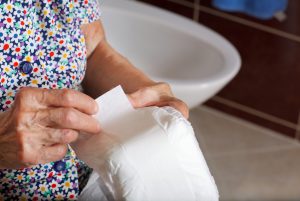 Roughly half of women over 50 deal with some form of urinary incontinence. Leaks and accidents, and other indignities, can be a significant stressor, a source of embarrassment, and suck the joy from your life.
Roughly half of women over 50 deal with some form of urinary incontinence. Leaks and accidents, and other indignities, can be a significant stressor, a source of embarrassment, and suck the joy from your life.
But you do not have to suffer in silence. You are not alone. There are far more treatments and people going through the same experience than you might believe.
Advertisement
Most women never seek treatment because they chalk the experience up to normal aging. Experts also suggest many sufferers avoid advice due to sheer embarrassment.
But let us face it: there is nothing to be embarrassed about. It’s a common condition that can be fixed. The sooner the problem is addressed, the faster you can resume a fruitful and enjoyable life.
Treatment options ultimately depend on what kind of urinary incontinence you are experiencing. The different types include:
- Stress urinary incontinence: Caused by bladder muscle contractions brought on by laughter, sneezing, coughing, or exercise.
- Urge incontinence: It happens when people have a strong urge to urinate and can’t stop the sensation. It is generally a result of bladder trouble that can be triggered by caffeine, spicy foods, or other items that cause bladder contractions.
- Mixed incontinence: A combination of both stress and urge incontinence.
Overflow incontinence: Less common in women and marked by an inability to completely empty the bladder.
Stress incontinence is the result of pelvic floor weakness and can be common in those who’ve had a vaginal birth, experience chronic constipation, or suffer from obesity or chronic lung disease.
The risk for urgency incontinence goes up in women over 50, those with neurological disorders, stroke victims, and previous urinary tract infections (UTIs).
Advertisement
Stress incontinence is treated by strengthening pelvic floor muscles. Kegel exercises strengthen the muscles surrounding the urethra and can be performed throughout the day. It’s best to do them while sitting or lying down. To perform, simply contract the muscles for 3–5 seconds, relax, and repeat.
Kegels may also be useful for urge incontinence, as can identifying and controlling triggers.
Both forms of incontinence have other, potentially more invasive, treatments. Discuss all your options with a doctor for your specific case.
